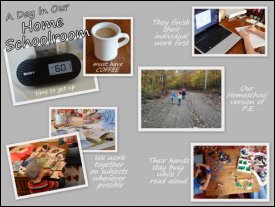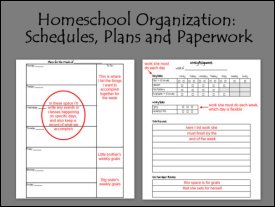Last Child in the Woods ~ Barriers to Free Play in Nature
I’m chiming in again in Nicole’s book study on Last Child in the Woods from Richard Louv. Be sure to visit her post to read her thoughts and those of others participating in this book study. This post covers chapters 9-11, which are in the section of the book dealing with why kids don’t play outside.
Chapter 9 had me nodding my head all over again with its discussion of over-scheduled kids. This topic had already come to my mind while reading this book, as I mentioned in my post on chapters 5-8. Not only is there less time for recess during school, but homework, lessons and other organized activities take up much of the time left after school. Like I said, I’m happy for the chance to homeschool. I can prioritize my child’s time to allow for the things that are important. Nicole mentioned the suggestion on page 121 in her post, and that was just what I needed, too: take time in nature out of the leisure column and put it in the health column. I love to make lists and check things off, and often have a hard time relaxing and not feeling like I’m accomplishing something. After reading all the chapters on the benefits to time in nature, I am hopeful I can view unstructured time outside as just as necessary for the kids as working on math and not let it fall by the wayside if we’re busy.
Chapter 10 is a little harder for me. I agree with much of it. I know the chances are very low that someone will abduct my child as they ride their bike down the street. But I am a worrier and don’t see myself being able to relax a lot in this department. As I discussed in my last post I hope to add more natural elements to our yard, along with giving my kids more time outside without me orchestrating activities. I can’t see myself letting them roam the neighborhood out of our yard, or head into the woods without me, but I can try to take them there more myself and maybe hang back a bit. Baby steps, right?
Chapter 11 was an interesting one. I had mentioned in my first post of this book study that I’d been incorporating nature study quite a bit, and hoped to do so even more. This chapter really cemented that plan for me. The discussion of how abstract many children’s nature education is rang true with me: in school it’s “Go Green!” and recycle, and learning about rainforest destruction or endangered animals, but “nature” is still a concept they are just seeing in a book or show. They aren’t out in it experiencing it and falling in love with it. This is how you really improve environmental issues, not by teaching them about things far away that they can’t see, touch and smell for themselves. I liked the quote from biologist Elaine Brooks on p. 141: “Humans seldom value what they cannot name.” So if kids can identify Pokemon characters better than native plants, what do you think they value the most? I wanted to incorporate more science education in our homeschool, and I realized after reading this chapter that the nature study that we already enjoy can be a big piece of their science education, not something separate that I fit in only if we have time. I just have to mention Barb at the Handbook of Nature Study blog while I’m on this topic because ideas from her blog are the how of nature study for us.
I’m really enjoying this book. Now that I’ve been persuaded of the importance of time in nature I am excited to delve into the parts of the book with ideas for implementation of a nature-child reunion!
 Hi, I'm Heidi and I homeschool my two sweet kids. I want them to know that learning is an exciting lifelong adventure! We love great books, unit studies, notebooking, lapbooking, and hands-on learning.
Hi, I'm Heidi and I homeschool my two sweet kids. I want them to know that learning is an exciting lifelong adventure! We love great books, unit studies, notebooking, lapbooking, and hands-on learning.



